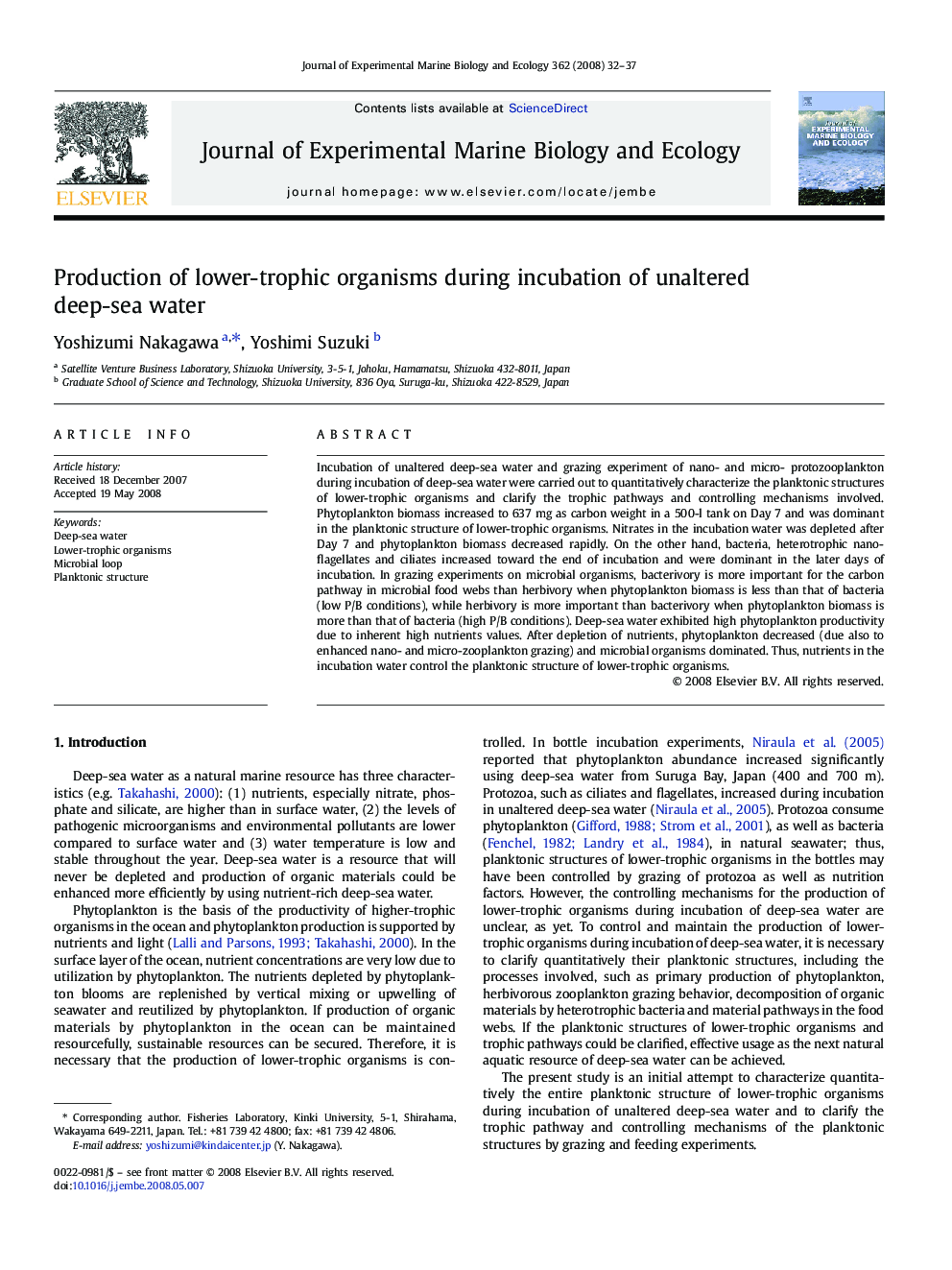| Article ID | Journal | Published Year | Pages | File Type |
|---|---|---|---|---|
| 4397294 | Journal of Experimental Marine Biology and Ecology | 2008 | 6 Pages |
Abstract
Incubation of unaltered deep-sea water and grazing experiment of nano- and micro- protozooplankton during incubation of deep-sea water were carried out to quantitatively characterize the planktonic structures of lower-trophic organisms and clarify the trophic pathways and controlling mechanisms involved. Phytoplankton biomass increased to 637Â mg as carbon weight in a 500-l tank on Day 7 and was dominant in the planktonic structure of lower-trophic organisms. Nitrates in the incubation water was depleted after Day 7 and phytoplankton biomass decreased rapidly. On the other hand, bacteria, heterotrophic nano-flagellates and ciliates increased toward the end of incubation and were dominant in the later days of incubation. In grazing experiments on microbial organisms, bacterivory is more important for the carbon pathway in microbial food webs than herbivory when phytoplankton biomass is less than that of bacteria (low P/B conditions), while herbivory is more important than bacterivory when phytoplankton biomass is more than that of bacteria (high P/B conditions). Deep-sea water exhibited high phytoplankton productivity due to inherent high nutrients values. After depletion of nutrients, phytoplankton decreased (due also to enhanced nano- and micro-zooplankton grazing) and microbial organisms dominated. Thus, nutrients in the incubation water control the planktonic structure of lower-trophic organisms.
Keywords
Related Topics
Life Sciences
Agricultural and Biological Sciences
Aquatic Science
Authors
Yoshizumi Nakagawa, Yoshimi Suzuki,
